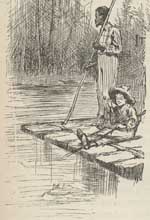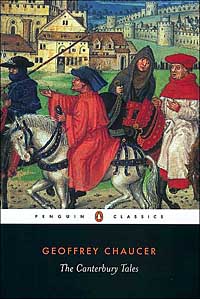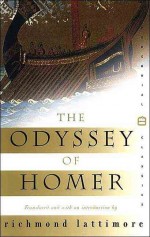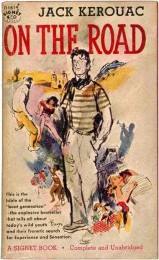10 Greatest Fictional Travelers
Lists: From La Mancha to Lilliput, Jim Benning and Michael Yessis track down the world's finest made-up globetrotters
08.23.07 | 1:23 PM ET
Fictional travelers have inspired our travels just as much as real-world travelers. To pay tribute, we’ve searched the corners of our English major brains to come up with the foremost fictional travelers: characters new and old whose travels are central to who they are, and whose journeys have helped shape and enlighten the world we live in. Here are World Hum’s 10 greatest fictional travelers.
10) Dora the Explorer
 Kids need travel role models as much as adults, and the animated Latina vagabond Dora the Explorer is an exemplary role model. With her trademark purple backpack, wash-and-wear bob (perfect for the tropics) and monkey sidekick, Boots (Sancho Panza to her Don Quixote), Dora wanders a lush countryside, navigating around strawberry mountains and chocolate lakes, embarking on all manner of quests. Along the way, she consults her trusty map, breaks out handy Spanish phrases, asks viewers for help and sings out, “Come on, vámonos!” The message to kids is clear: The world is yours for the exploring, and with a little effort and help from your friends, you can surmount any obstacles that get in your way.
Kids need travel role models as much as adults, and the animated Latina vagabond Dora the Explorer is an exemplary role model. With her trademark purple backpack, wash-and-wear bob (perfect for the tropics) and monkey sidekick, Boots (Sancho Panza to her Don Quixote), Dora wanders a lush countryside, navigating around strawberry mountains and chocolate lakes, embarking on all manner of quests. Along the way, she consults her trusty map, breaks out handy Spanish phrases, asks viewers for help and sings out, “Come on, vámonos!” The message to kids is clear: The world is yours for the exploring, and with a little effort and help from your friends, you can surmount any obstacles that get in your way.
9) Ryan Bingham

8) Kit and Port Moresby
 The wife and husband at the center of Paul Bowles’s classic novel “The Sheltering Sky” embody perhaps better than any fictional travelers the ongoing, if fruitless, debate about the difference between travelers and tourists. Early in the book, which chronicles the pair’s journey to the North African desert, Bowles writes of his male protagonist: “He did not think of himself as a tourist; he was a traveler. The difference is partly one of time, he would explain. Whereas the tourist generally hurries back home at the end of a few weeks or months, the traveler, belonging no more to one place than to the next, moves slowly, over periods of years, from one part of the earth to another.” In the end, the pair reveals just how powerfully the external journey can shape, for better or worse, the journey inward.
The wife and husband at the center of Paul Bowles’s classic novel “The Sheltering Sky” embody perhaps better than any fictional travelers the ongoing, if fruitless, debate about the difference between travelers and tourists. Early in the book, which chronicles the pair’s journey to the North African desert, Bowles writes of his male protagonist: “He did not think of himself as a tourist; he was a traveler. The difference is partly one of time, he would explain. Whereas the tourist generally hurries back home at the end of a few weeks or months, the traveler, belonging no more to one place than to the next, moves slowly, over periods of years, from one part of the earth to another.” In the end, the pair reveals just how powerfully the external journey can shape, for better or worse, the journey inward.
7) Huckleberry Finn and Jim
 Huck and Jim, the two main characters in Mark Twain’s “Adventures of Huckleberry Finn,” aren’t quite direct descendants of Don Quixote and Sancho Panza. Twain drops Quixote’s name, but puts it in the mouth of Tom Sawyer, not Huck or Jim. Still, the reference signals Cervantes’s influence, and through Huck and Jim, Twain builds on what came hundreds of years before. A mismatched duo finds adventure along America’s iconic waterway, the mighty Mississippi, while wrestling with America’s defining issue, slavery. The initial reason for the journey still resonates. Huck fakes his own death and, to escape efforts to “sivilize” him, he heads for the river, where he eventually meets up with Jim. What traveler hasn’t been tempted to chuck it all and head into the unknown?
Huck and Jim, the two main characters in Mark Twain’s “Adventures of Huckleberry Finn,” aren’t quite direct descendants of Don Quixote and Sancho Panza. Twain drops Quixote’s name, but puts it in the mouth of Tom Sawyer, not Huck or Jim. Still, the reference signals Cervantes’s influence, and through Huck and Jim, Twain builds on what came hundreds of years before. A mismatched duo finds adventure along America’s iconic waterway, the mighty Mississippi, while wrestling with America’s defining issue, slavery. The initial reason for the journey still resonates. Huck fakes his own death and, to escape efforts to “sivilize” him, he heads for the river, where he eventually meets up with Jim. What traveler hasn’t been tempted to chuck it all and head into the unknown?
6) Lemuel Gulliver
 Jonathan Swift’s “Travels into Several Remote Nations of the World,” better known now as “Gulliver’s Travels,” is often regarded as a children’s book. Of course, it’s more than that. Swift’s novel is a satire of religion, 18th century European society and, yes, an enduring travel narrative. Lemuel Gulliver’s fantastical journeys among the itty-bitty Lilliputians, the oversized Brobdingnagians and others endure, at the very least, because of this: Anyone who has found himself or herself disoriented in a foreign land, not knowing a language, sorely sticking out on the street, can relate to the man who found himself, among other things, 12 times smaller—and 12 times taller—than the locals.
Jonathan Swift’s “Travels into Several Remote Nations of the World,” better known now as “Gulliver’s Travels,” is often regarded as a children’s book. Of course, it’s more than that. Swift’s novel is a satire of religion, 18th century European society and, yes, an enduring travel narrative. Lemuel Gulliver’s fantastical journeys among the itty-bitty Lilliputians, the oversized Brobdingnagians and others endure, at the very least, because of this: Anyone who has found himself or herself disoriented in a foreign land, not knowing a language, sorely sticking out on the street, can relate to the man who found himself, among other things, 12 times smaller—and 12 times taller—than the locals.
5) The Original Crew of the Starship Enterprise
What serious traveler doesn’t want to explore strange new worlds? To seek out new civilizations? To boldly go? Even non-Trekkies can agree that the famous lines from the opening of every episode of the original Star Trek reflect the hard-wired curiosity of globetrotters. Captain Kirk, Spock, McCoy, Uhura, Sulu and the rest of the crew zipped around at warp speed, engaging the strange and the new with passion, tenacity and, like some modern adventurers, occasionally in colorful, indigenous clothing. Danger lurked, sure, but they pressed on as altruistic citizens of the universe, always interested in building bridges and discovering what lies ahead at the edge of the next galaxy. Why just the original Trek crew? They were there first.
4) The Pilgrims From the Canterbury Tales
 It’s not the distance the pilgrims in Geoffrey Chaucer’s 14th century masterpiece “The Canterbury Tales” were asked to travel by their host, Harry Bailey, that led us to include them. Google Maps puts the mileage from Southwark to Canterbury at 57.4 miles, which, in modern terms, isn’t much of a trek—an hour and 19 minute drive via A2 and M2, by Google’s calculation. No, it’s the simple truths of the journey taken by the “nyne and twenty” travelers that matter. As pilgrims to the shrine of St. Thomas Becket, they represent travel’s spiritual roots. More compelling, perhaps, is the idea that a knight, a cook, a clerk, a monk, a wife of Bath and 24 others—a microcosm of society—could band together on the road, on a spring day, telling tales and learning about each other’s lives and the world. It’s perhaps the supreme literary example of travel binding strangers together.
It’s not the distance the pilgrims in Geoffrey Chaucer’s 14th century masterpiece “The Canterbury Tales” were asked to travel by their host, Harry Bailey, that led us to include them. Google Maps puts the mileage from Southwark to Canterbury at 57.4 miles, which, in modern terms, isn’t much of a trek—an hour and 19 minute drive via A2 and M2, by Google’s calculation. No, it’s the simple truths of the journey taken by the “nyne and twenty” travelers that matter. As pilgrims to the shrine of St. Thomas Becket, they represent travel’s spiritual roots. More compelling, perhaps, is the idea that a knight, a cook, a clerk, a monk, a wife of Bath and 24 others—a microcosm of society—could band together on the road, on a spring day, telling tales and learning about each other’s lives and the world. It’s perhaps the supreme literary example of travel binding strangers together.
3) Odysseus
 Odysseus was practically Homeric in his timelessness. His travels were almost epic. Oh wait, he was Homeric, and his travels were epic. If Homer’s “The Odyssey” was the first novel ever written, as some scholars suggest—yes, technically, it’s a poem—that would make his Odysseus the first great fictional traveler. His far-fetched adventures—including his encounter with Circe, who turned men into swine—still resonate with modern travelers. But what’s most impressive is how this fictional traveler has endured through the ages. Odysseus’s wanderings around the Mediterranean inspired the most ambitious modern novel ever written, James Joyce’s “Ulysses,” and its hero’s epic wanderings around Dublin. And more than any other fictional traveler, Odysseus and his journey have been celebrated and recalled in countless poems, sculptures, paintings, movies, and, yes, even rock songs.
Odysseus was practically Homeric in his timelessness. His travels were almost epic. Oh wait, he was Homeric, and his travels were epic. If Homer’s “The Odyssey” was the first novel ever written, as some scholars suggest—yes, technically, it’s a poem—that would make his Odysseus the first great fictional traveler. His far-fetched adventures—including his encounter with Circe, who turned men into swine—still resonate with modern travelers. But what’s most impressive is how this fictional traveler has endured through the ages. Odysseus’s wanderings around the Mediterranean inspired the most ambitious modern novel ever written, James Joyce’s “Ulysses,” and its hero’s epic wanderings around Dublin. And more than any other fictional traveler, Odysseus and his journey have been celebrated and recalled in countless poems, sculptures, paintings, movies, and, yes, even rock songs.
2) Don Quixote and Sancho Panza
 Every adventure traveler—and every Hollywood buddy flick—owes a debt to Don Quixote and his sidekick Sancho Panza. In “Don Quixote,” Miguel de Cervantes initially sends his protagonist off alone from La Mancha, but soon enlists the company of a neighbor, Sancho Panza. Together they form a heroic, comic duo for the ages, embarking on some of literature’s most famous adventures, picking fights with pesky windmills and endeavoring to fight injustice and make the world a better place. In that way, the duo are precursors to modern-day voluntourists.
Every adventure traveler—and every Hollywood buddy flick—owes a debt to Don Quixote and his sidekick Sancho Panza. In “Don Quixote,” Miguel de Cervantes initially sends his protagonist off alone from La Mancha, but soon enlists the company of a neighbor, Sancho Panza. Together they form a heroic, comic duo for the ages, embarking on some of literature’s most famous adventures, picking fights with pesky windmills and endeavoring to fight injustice and make the world a better place. In that way, the duo are precursors to modern-day voluntourists.
1) Sal Paradise
 Few travelers, real or fictional, are as exuberant as Sal Paradise. The “On the Road” narrator criss-crosses the United States as though in a fever dream, embarking on one mad journey after another. Perhaps that’s why the fictional stand-in for Jack Kerouac has inspired generations of restless wanderers since the landmark novel was published 50 years ago. Through Sal—as articulate a traveler as one could hope for—readers experience euphoria and despair and every emotion in between. At one point, he likens himself to a “speck on the surface of the sad red earth.” Then, in California’s San Joaquin Valley, he pokes his head out the window of a rolling train, inhales the fragrant air and experiences “the most beautiful of all moments.” Sal asks: “What is that feeling when you’re driving away from people and they recede on the plain till you see their specks dispersing?—it’s the too-huge world vaulting us, and it’s goodbye. But we lean forward to the next crazy venture beneath the skies.” That’s why we love Sal. The road and all those crazy ventures call out to him and, instinctively, he answers.
Few travelers, real or fictional, are as exuberant as Sal Paradise. The “On the Road” narrator criss-crosses the United States as though in a fever dream, embarking on one mad journey after another. Perhaps that’s why the fictional stand-in for Jack Kerouac has inspired generations of restless wanderers since the landmark novel was published 50 years ago. Through Sal—as articulate a traveler as one could hope for—readers experience euphoria and despair and every emotion in between. At one point, he likens himself to a “speck on the surface of the sad red earth.” Then, in California’s San Joaquin Valley, he pokes his head out the window of a rolling train, inhales the fragrant air and experiences “the most beautiful of all moments.” Sal asks: “What is that feeling when you’re driving away from people and they recede on the plain till you see their specks dispersing?—it’s the too-huge world vaulting us, and it’s goodbye. But we lean forward to the next crazy venture beneath the skies.” That’s why we love Sal. The road and all those crazy ventures call out to him and, instinctively, he answers.
Who’s your favorite fictional traveler? Let us know below.![]()